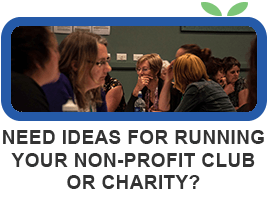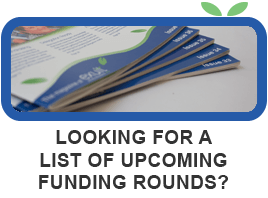Last updated May 25, 2016
Fundraising can often feel like an overwhelming, never-ending task, especially for small organisations with limited resources to invest in the fundraising process. Thankfully, successful fundraising does not rely on just one thing, but rather a whole heap of little things, all done extremely well. Check out these 30 minute actions that will help you bring in more funds, more often.
1. Create a Thankyou Box
Raising funds is all about building relationships and saying thank you is an essential part of this. Create a thankyou box full of cards and client stories that you can instantly use when a gift is received. Thank you notes should be sent within 48 hours of receiving a donation, so having everything on hand is an important part of the process.
2. Update Your Website
Many potential donors will visit your website before committing to make a donation. If your website is out of date, it will cast a shadow of doubt on your credibility. Set aside 30 minutes every week to go through your website page by page and make sure that everything is up-to-date and relevant. If necessary, put a reminder in your calendar to ensure that you don’t forget.
3. Use Your Email Signature
Your email signature is a mobile advertisement, so make sure you use it to say something useful. Instead of simply stating your contact details, add a brief message about a project you are working on and include a link through to your fundraising page. For even more impact, make sure your staff, volunteers and trustees include a message in their email signature as well.
4. Become a Regular Giver Yourself
If you are responsible for fundraising in your organisation, you must be committed to making regular donations to your cause. Just as it is important for trustees to lead by example, so too is it for you. Not only will you instantly be raising more funds, you will get an insight into what it feels like to be a donor. By default, you will be more invested in your role. The size of the gift is irrelevant – it is the commitment to giving that counts.
5. Add a Wish-List to Your Newsletter
Fundraising isn’t just about raising money, it’s also about raising support and reducing your costs. There are many people who may not be in a position to give financially, but they may be able to help in other ways – if they know what you need. Make sure you include a wish-list in every newsletter and list items both big and small that you are looking to purchase. You never know what type of products or services people have access to unless you ask.
6. Visit Your Programme in Action
In many organisations the person responsible for fundraising is also responsible for running the programmes, managing staff and recruiting volunteers. While this is undoubtedly a big ask (and certainly not ideal), it does make it easier to talk to potential supporters when you know exactly what is happening on the front line.
If you’re lucky enough to only wear one hat, and your whole role is dedicated to raising funds, you need to make a special effort to stay connected to the front line. Take time out every week to attend programmes, pitch in with special projects, and talk to clients, staff and volunteers. This not only ensures you are well informed when talking with potential supporters; it helps keep you motivated and excited about the cause as well.
7. Ask Donors to Spread the Word
Building trust with people who have never heard of your organisation can take time, but you can use your current donors and supporters to help build trust on your behalf.
Take time to actively encourage your donors to talk to their friends about your organisation. They don’t necessarily have to make a specific request for money, (although it would be great if they did), but by simply sharing stories about your organisation and why they choose to give, they are raising awareness of the work you do and providing a valuable third party endorsement. Next time their friend picks up your brochure or sees a fundraising campaign, there will already be a certain level of trust because of your donor’s input.
8. Invite People to Visit Your Organisation
Giving donors (or potential donors) the opportunity to watch your programmes in action can be a really effective way to grow your donations. Not only do they get to see the quality of the service you deliver, they get to see the impact it makes first-hand.
Where possible, invite major donors out one at a time so that you can give them your undivided attention and put what they are watching (or participating in) into context. Make sure you are well prepared for the visit and allow plenty of time to tell stories, answer questions, and introduce them to clients, staff and volunteers. Your donor should leave with fresh insights about what your organisation does and why you do it, and most importantly, they should leave feeling like they are a treasured part of the team.
9. Develop your Case for Support
People make donations for all sorts of reasons, but for the most part it is because they consider the work of your organisation to be important. They recognise there is a problem that needs solving or a challenge that needs addressing, and they believe that your organisation is doing so in a meaningful way. In a nutshell, if you want more donors, you need more people to:
a) Know that the problem or challenge exists
b) Agree that the problem or challenge needs addressing now
c) Believe that the way in which your organisation addresses the problem is effective and meaningful
There are lots of ways you can discuss or raise awareness of these points with potential donors, but before you do, you need to get clear about them yourself. What is the problem or challenge your organisation is addressing? Why is it important that this problem or challenge is addressed now? How can you prove that the way your organisation is addressing the problem actually works? That’s your ‘Case for Support’.
10. Gather Stories
One of the most effective ways to share your ‘Case for Support’ is to tell individual stories of how your organisation has impacted others. Set aside 30 minutes every couple of weeks to talk face-to-face with someone and record their story. It doesn’t always have to be a client or member either, some of the most powerful stories can come from volunteers who have witnessed impacts first-hand.
By gathering stories on a regular basis, you will build up a range of narratives, each of which can be used in different circumstances and in different ways. The more stories you have on hand, the more chance you have of finding the perfect fit for the situation.
11. Give to Other Organisations
This may seem like a funny way to raise more funds, but giving to another organisation is a great way to find out what works and what doesn’t. Choose a few organisations that you think are doing well in the donor stakes, and make a small donation to each of them. Take note of how they respond. What information do they send, how do they follow-up, what do they do well and where could they improve? It’s an easy and cost effective way to learn from others.
12. Create a Thank You Screen for Online Donations
Online Giving is a growing medium for raising funds, but getting that initial donation is only half the process. As soon as someone makes a gift, you want them to feel appreciated and a part of your team.
Set up an automatic confirmation screen that acknowledges the specific gift and thanks the donor for their contribution. While this shouldn’t be the only thank you they receive, this screen is a good way to invite donors to opt-in to your newsletter and like your Facebook page. Explain that by doing so they will be able to keep up-to-date with how their donation is being used.
13. Write a Press Release
Your local newspaper is a great way to tell your stories and keep your organisation in the public eye, but in order for your story to be included, you first need to let them know that something newsworthy is going on.
Get into the habit of sending a press release every month, and make a special effort to thank the reporter when your story is published. Remember, being a charity is not newsworthy in itself, so make sure you find an interesting angle or link your organisation to a current ‘hot topic’ in the media. Having a regular profile in your local newspaper will help raise awareness of your cause and attract the attention of potential supporters.
Author: Kerri Tilby-Price
Kerri has been involved in the community sector for over 20 years and knows first-hand how overwhelming fundraising can feel – especially in small organisations. One of her favourite mantras is ‘How do you eat an elephant? One bite at a time’, and she applies this ideal to everything she does. You can get more of Kerri’s 30 Minute Fundraising Ideas in Exult’s Sustainable Funding Workshop which is delivered throughout New Zealand.
If you think this article would be useful for your members, you are welcome to use it on your website or in your newsletter. We just ask that you let us know where it is being used, and that you acknowledge our website at the bottom of the article. If you are using the article online, please include a link to our homepage.




